Similar presentations:
State of connecticut department of education department of developmental services
1. State of Connecticut Department of Education Department of Developmental Services
Making the PPT ProcessMore Effective for You
and Your Child
2. Today you will learn more about:
Changes to IDEA and the new IEP formStrategies for effective communication
What to do when you disagree
3. The Individuals with Disabilities Education Act – IDEA 2004
1975 – Education of All HandicappedChildren Act
Reauthorized every five years
Provides for a free appropriate public
education (FAPE) for students with
disabilities
Last reauthorized in 2004
Final regulations have been issued
4.
The Individuals with DisabilitiesEducation Act – IDEA 2004
The law tells us that parents are expected to
be equal partners in planning and
implementing their child’s educational
program.
No Child Left Behind – Parent involvement
and choice is expected
IDEA – required parent participation since
1975 and funds the Parent Training and
Information Centers (PTIs)
5. IDEA ’04 Requirement
New monitoring priority in 2004 – in StatePerformance Plan
Increase the percent of parents with a child
receiving special education services who
report that schools facilitated parent
involvement as a means of improving
services and results for children with
disabilities.
6. Preparing for the Planning and Placement Team Meeting - PPT
The PPT meets to:Initiate and discuss evaluations
Determine eligibility for special education
and related services
Develop, review and/or revise a child’s
Individualized Education Program (IEP).
7. The PPT consists of:
The child’s parent or parents;At least one regular education teacher if the
child is being considered for regular
education setting;
At least one special education teacher;
A representative from the district
knowledgeable of the availability of
resources;
8. The PPT consists of:
An individual who can interpret evaluationresults;
Others at the discretion of the parent or
agency; and
When appropriate, the child.
9. Attendance at PPTs – IDEA 2004
A PPT member may be excused when:The parent and the agency agree, due to the fact
that the member’s area is not being discussed;
The parent consents in writing, and the agency
also consents; and
The member submits, in writing to the parents and
the team, his or her input into the development of
the IEP prior to the meeting.
10. Building Blocks
Knowledge of the child – who is this child?How does this disability affect the child?
What are visions and priorities for the
child?
Effective communication
Desire to work together
Knowledge of education laws
Acknowledge different ways to participate
11. Communication Strategies
Acknowledge your own communication style andfeelings – be willing to move forward
Encourage mutual respect
Maintain open communication
Establish a relationship with your child’s
educators
Communicate on a regular basis – email,
communication log, phone call, notes, quick chats
etc.
12. Preparing for the PPT Meeting
Gather important and relevant information – createa home file
Think about the student’s strengths and needs –
use Positive Student Profile and Goals-at-a-Glance
See the big picture – consider Futures Planning as
an option
Prioritize the most important issues
Share your agenda with the team ahead of time
13. The IEP
The Individualized Education Program (IEP) is awritten plan that details each child’s special
education and related services.
All students receiving special education must have
an IEP.
The IEP must be reviewed annually.
14. Components of the IEP:
The IEP must include:Present levels of academic achievement and
functional performance – page 4-5
A statement of measurable annual goals, including
both academic and functional goals – page 7
IDEA allowed for elimination of short term
objectives – CT requires short term objectives.
15. Components of the IEP
Prior Written Notice – page 3Provides written notice of the action(s) that
have been proposed or refused by the PPT;
Team needs to indicate the reason for
refusal of an action;
Team needs to indicate the evaluation
procedures, assessments, records or reports
used for the action refused.
16. Reporting on Progress:
IEP must include:A description of how progress toward meeting
annual goals will be measured and
A description of when progress reports will be
provided to parents.
17. IEP Includes Service and Supports that Allow the Child to:
Advance towards meeting annual goals;Progress in the general education
curriculum;
Participate in extracurricular activities and
non-academic activities; and
Be educated and participate with children
who do not have disabilities.
18. Related Services on the IEP
Related services are developmental,corrective, or supportive services required
to assist a student with a disability to benefit
from special education.
19. Examples of Related Services
Assistive TechnologyAudiology Services
Counseling
Physical Therapy
Parent Training
School Nurse Services
Psychological Services
Occupational Therapy
Speech Language Therapy
Physical Therapy
Social Work Services
Transportation
20. IEP Services
Must be based on peer-reviewed research to theextent practicable;
Must refer to the child’s involvement and progress
in the general education curriculum; and
Must include a statement of the projected date for
the beginning of the services, the frequency, the
location and duration of services – page 11.
21. IEP and Secondary Transition
Beginning with the IEP to be in effect when the childturns 16 (IDEA 2004) and then updated annually
thereafter, the IEP must include:
Appropriate
post secondary goals based on ageappropriate transition assessments related to
training, education, employment and when
appropriate, independent living skills – page 6.
22. IEP and Secondary Transition
The IEP must include:Transition services including courses of study;
Age of majority information;
Expected date of graduation (up to age 21) ; and
If graduating or exceeding age eligibility, the
completion date of the Summary of Performance
(IDEA 2004) – back of IEP manual.
23. Changes and Amendments to the IEP
Changes to an IEP can be made without a teammeeting if parents and district agree and develop a
written document to amend or modify the current
IEP (IDEA 2004);
Districts shall encourage the consolidation of reevaluation meetings and other PPT meetings; and
Amendments to the IEP can be made by either the
PPT or the parents and the district and the IEP can
be amended, rather than redrafting the entire
document – unless the parent requests a copy of
the revised IEP.
24. What to do when you disagree:
Share your vision and priorities for thechild.
Try not to personalize disagreements.
Refocus the discussion on the child’s
strengths and needs.
Recognize that there is more than one way
to do things.
Share information.
25. Conflict Resolution Options
CompromiseInformal mediation or facilitated IEP – identify an
ally in the school
Go up the chain of command
Teacher
Principal
District Central Office–Sp Ed Director or Supervisor
Superintendent
State Department of Education
26. Resolution Options
MediationDue Process Hearing
Advisory Opinion
Resolution Session (IDEA 2004)
File a complaint
27. Mediation
Mediation is an informal process that is voluntaryand confidential.
Both sides must agree to mediation.
What is said during mediation cannot be used as
evidence in subsequent legal actions.
The mediator provides a problem solving structure
and process to assure everyone will be listened to.
The mediation helps the parties begin a
constructive dialogue.
28. Mediation
The mediator does not make decisions forthe parties.
A successful mediation will result in the
development of a plan that both parties are
comfortable with and can implement
together.
A mediation agreement must be in writing
and signed by both parties.
29. Due Process Hearing
Due Process Hearing is a formal legalproceeding.
The parties, their attorneys or advocates
present evidence to the hearing officer.
The hearing officer makes a decision and
issues a written order.
Either party can request a due process
hearing.
30. Resolution Session
Within 15 days of the Due Process Hearingrequest by a parent, the district must convene a
meeting with:
Parents
Relevant PPT members
An agency representative with decision making
authority
May not include the district attorney unless the
parent’s attorney is present.
Parties may agree, in writing, to waive the meeting
or use mediation in lieu of resolution session.
31. Advisory Opinion
The Advisory Opinion is an optionalprocess in CT, available to parties of a due
process hearing.
Parties jointly request the Advisory Opinion
before the hearing convenes.
The Advisory Opinion is not available after
the hearing has convened.
32. Advisory Opinion
Each party has 45 minutes to explain their casesand then an additional 15 minutes to ask questions
of any witness or elaborate on their case.
The advisory opinion hearing officer will render
an oral opinion within 30 minutes of the closing
presentation.
After rendering an opinion, the hearing officer
may facilitate settlement discussions.
33. Filing a Complaint
A complaint is filed with the CT State Departmentof Education (SDE) if a parent believes that the
school did not follow the law.
The request must be made in writing.
The SDE will investigate the complaint and issue
a written final decision in 60 days.
The SDE will monitor each corrective action
required by the final decision.
34. What Happens When It’s Over?
Win or lose, you still have to work togetherfor the good of the child, so….
Be positive
Be respectful
Be welcoming
Be ready and willing to start over!
35. For More Information Contact:
YourSchool, District, or B-3 Service Coordinator
Your DDS Case Manager, Ed Liaison, Transition
Coordinator
The Connecticut Parent Advocacy Center, 1-800-445-2722
or visit the website at www.cpacinc.org
The State Department of Education, Bureau of Special
Education, 860-713-6910 or visit the website at
www.sde.ct.gov
The State Education Resource Center (SERC).
(860) 632-1485 or visit the website at www.ctserc.org


















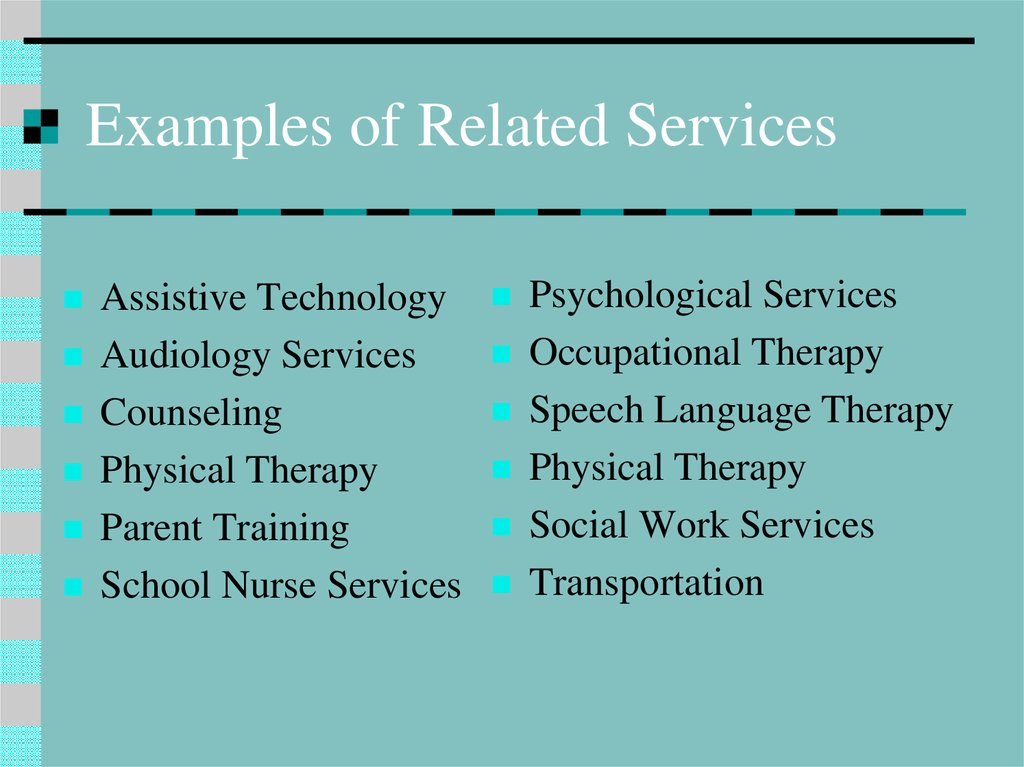

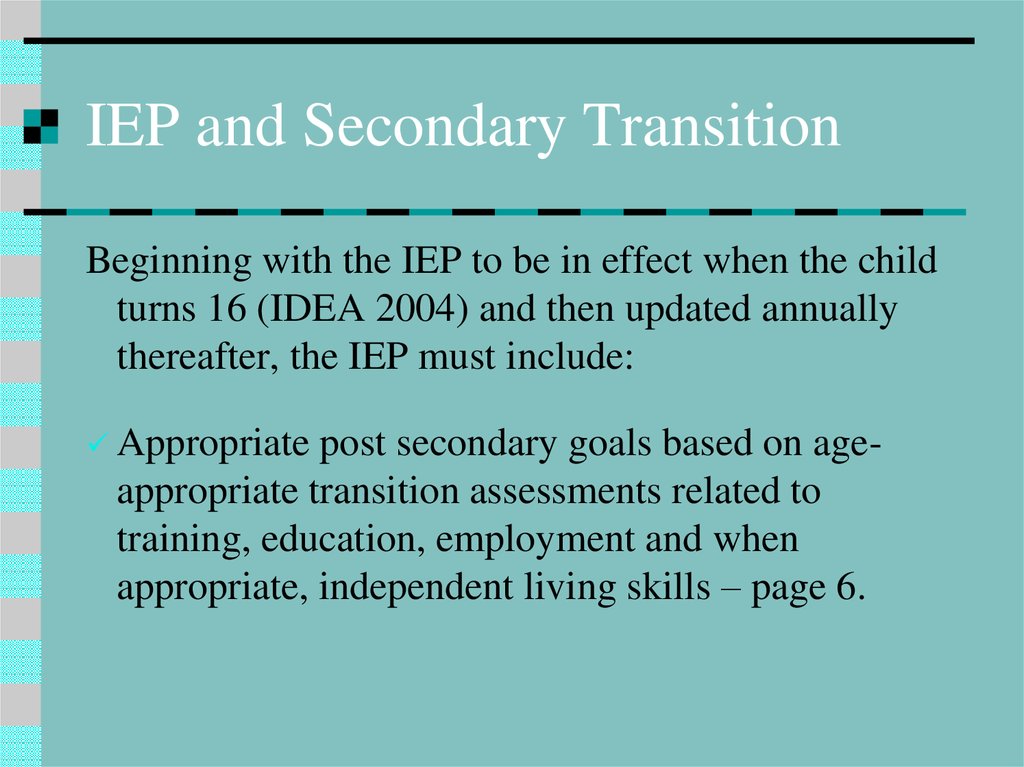


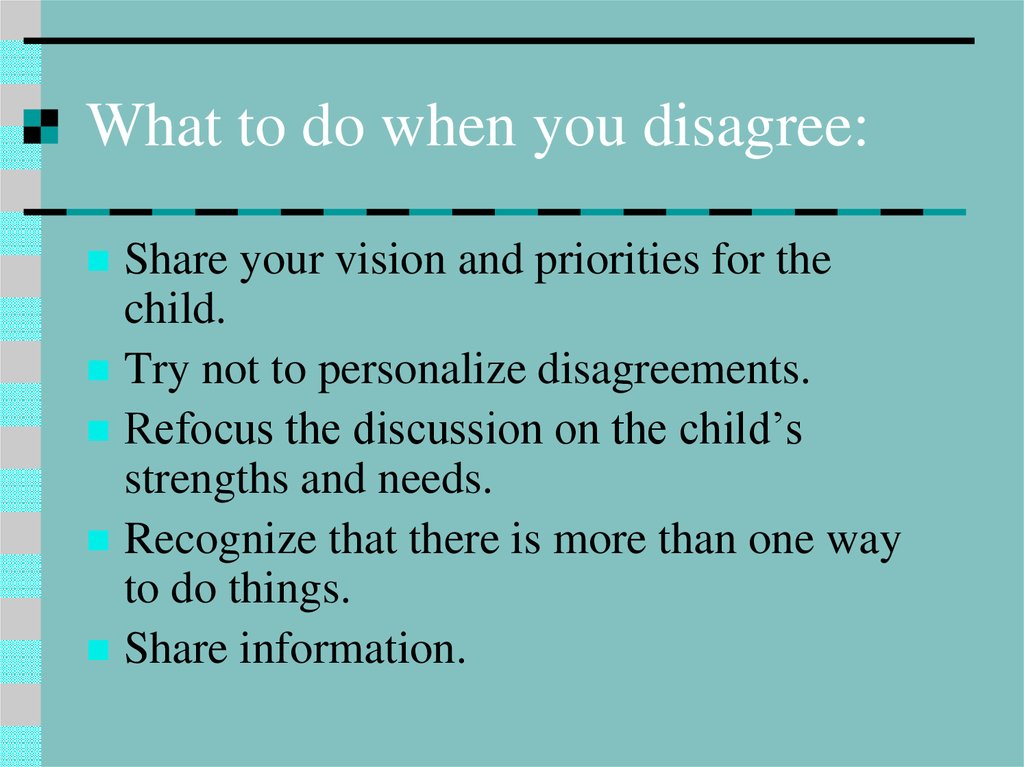


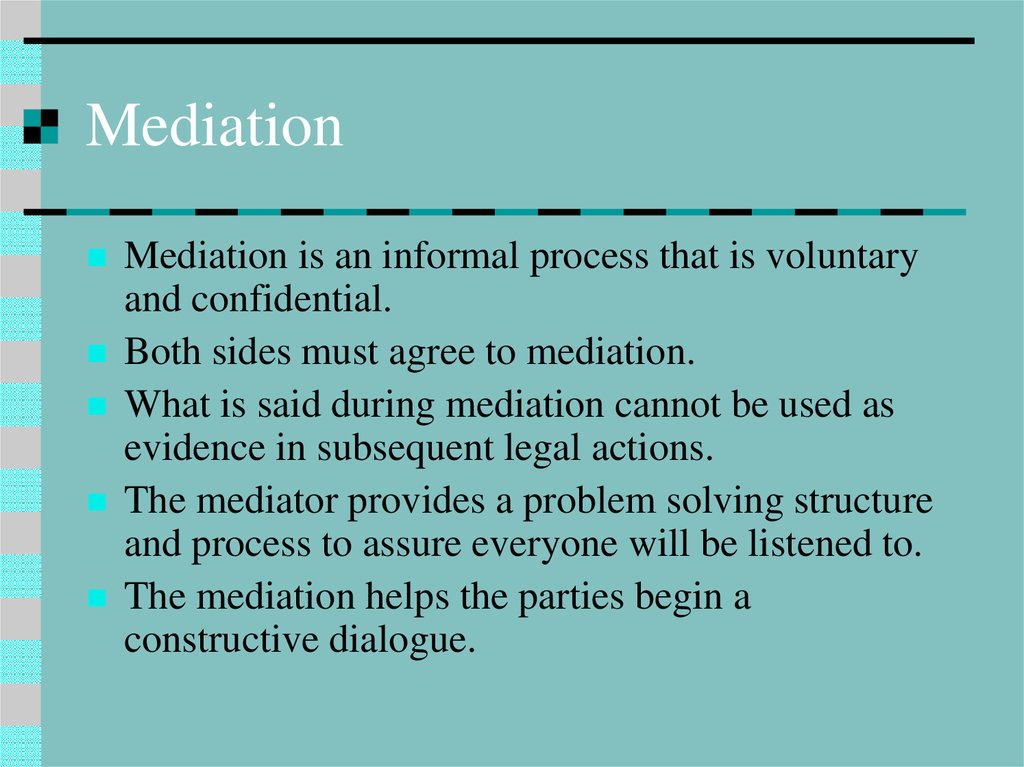
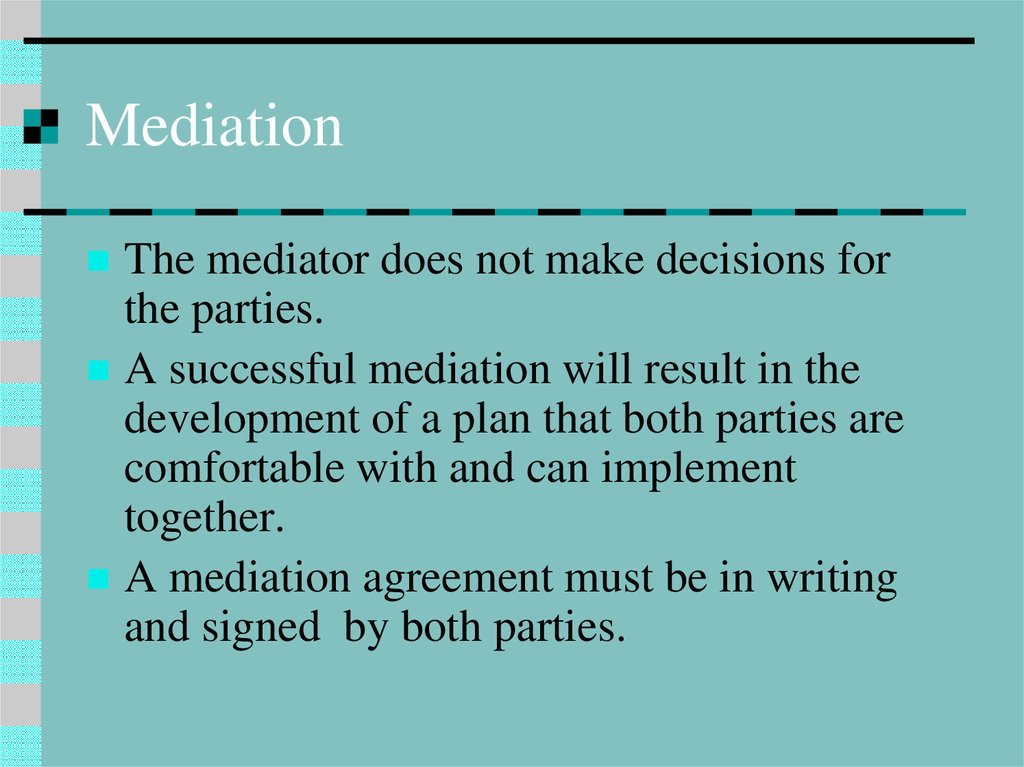
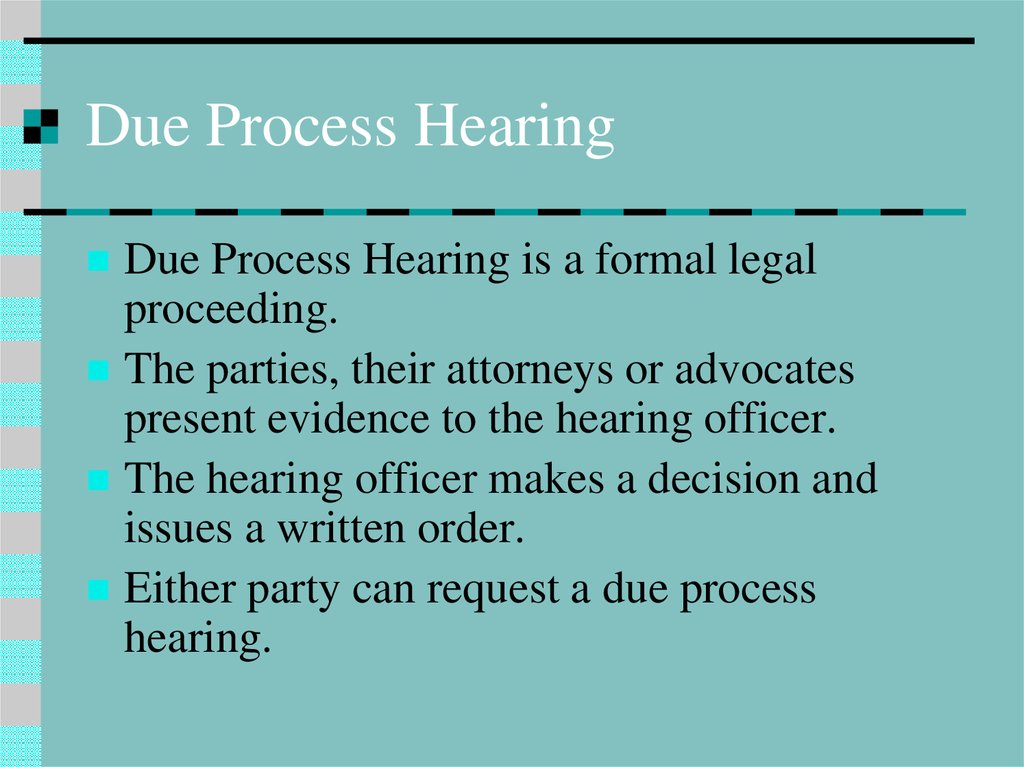
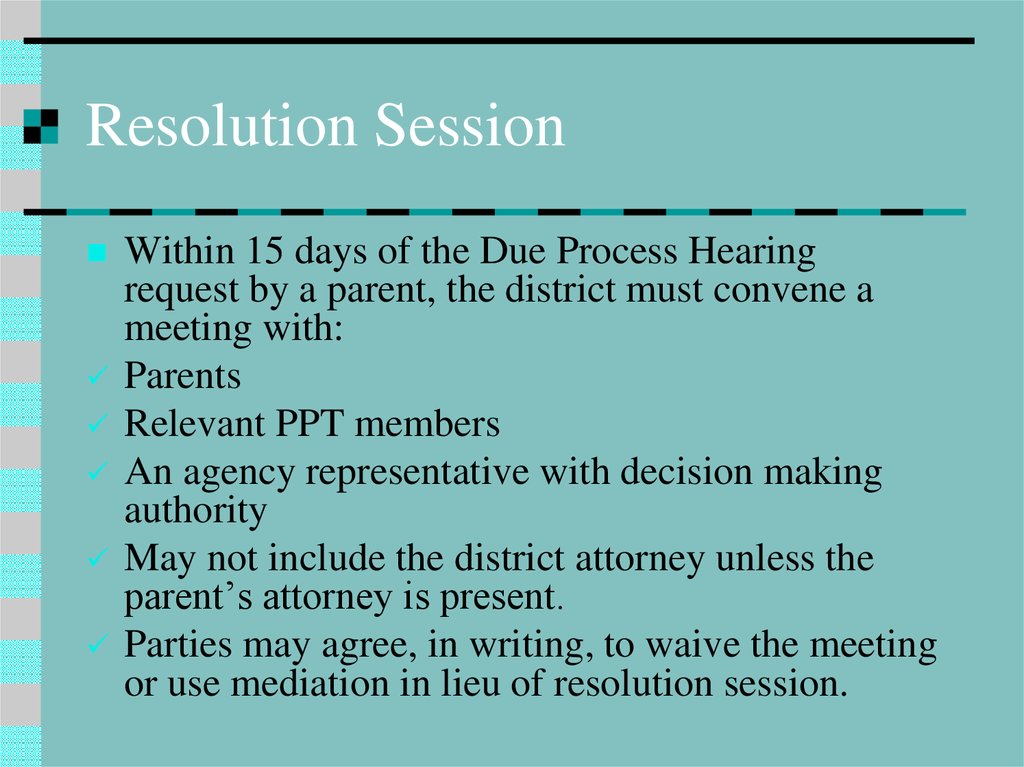
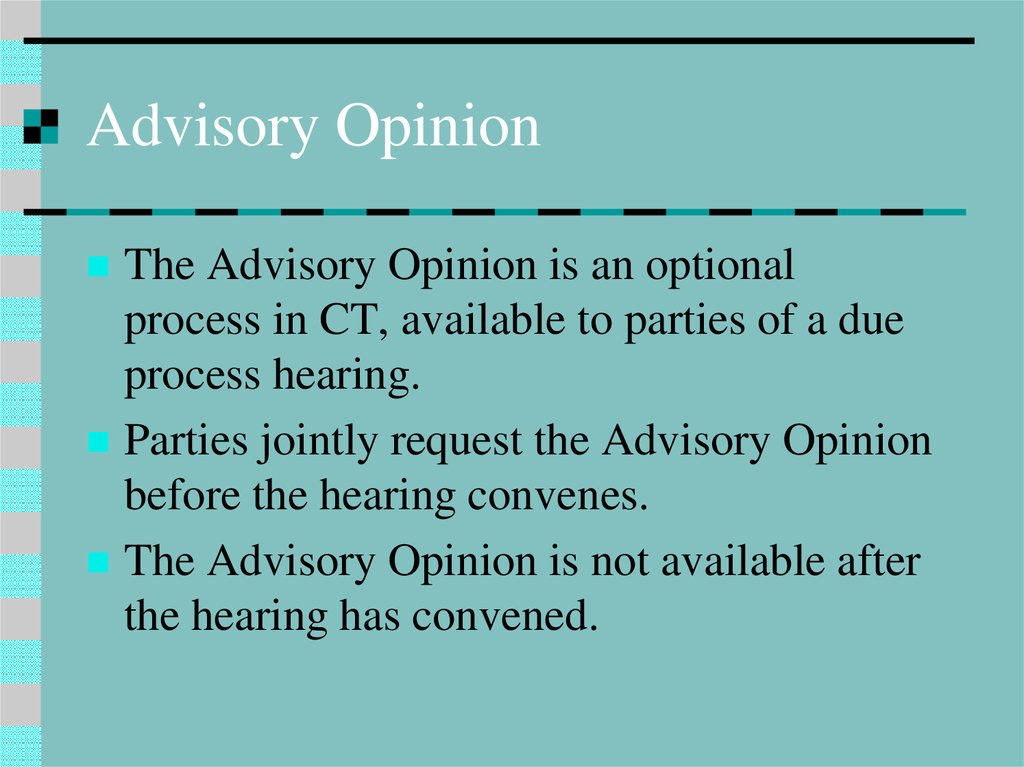
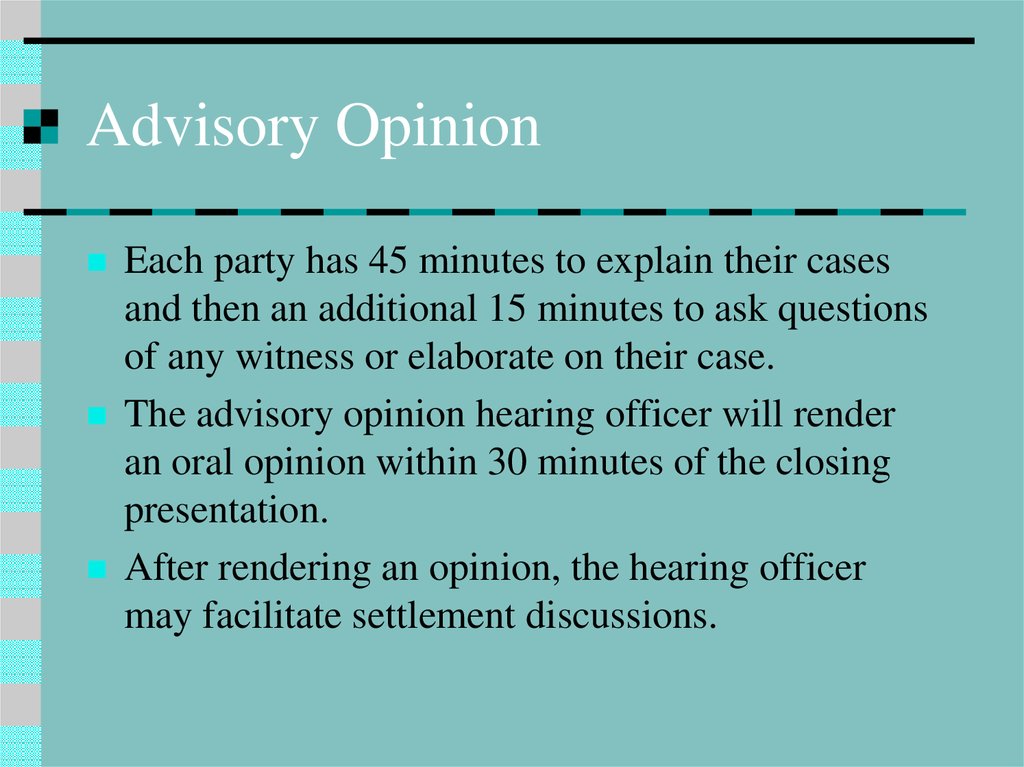


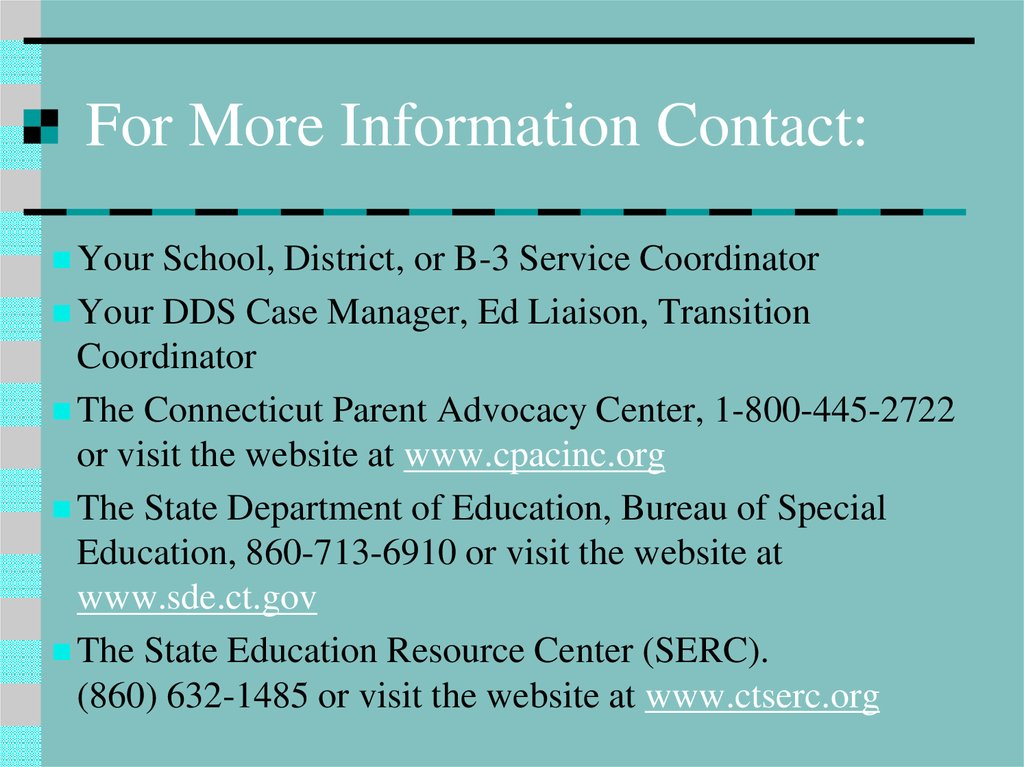
 education
education








